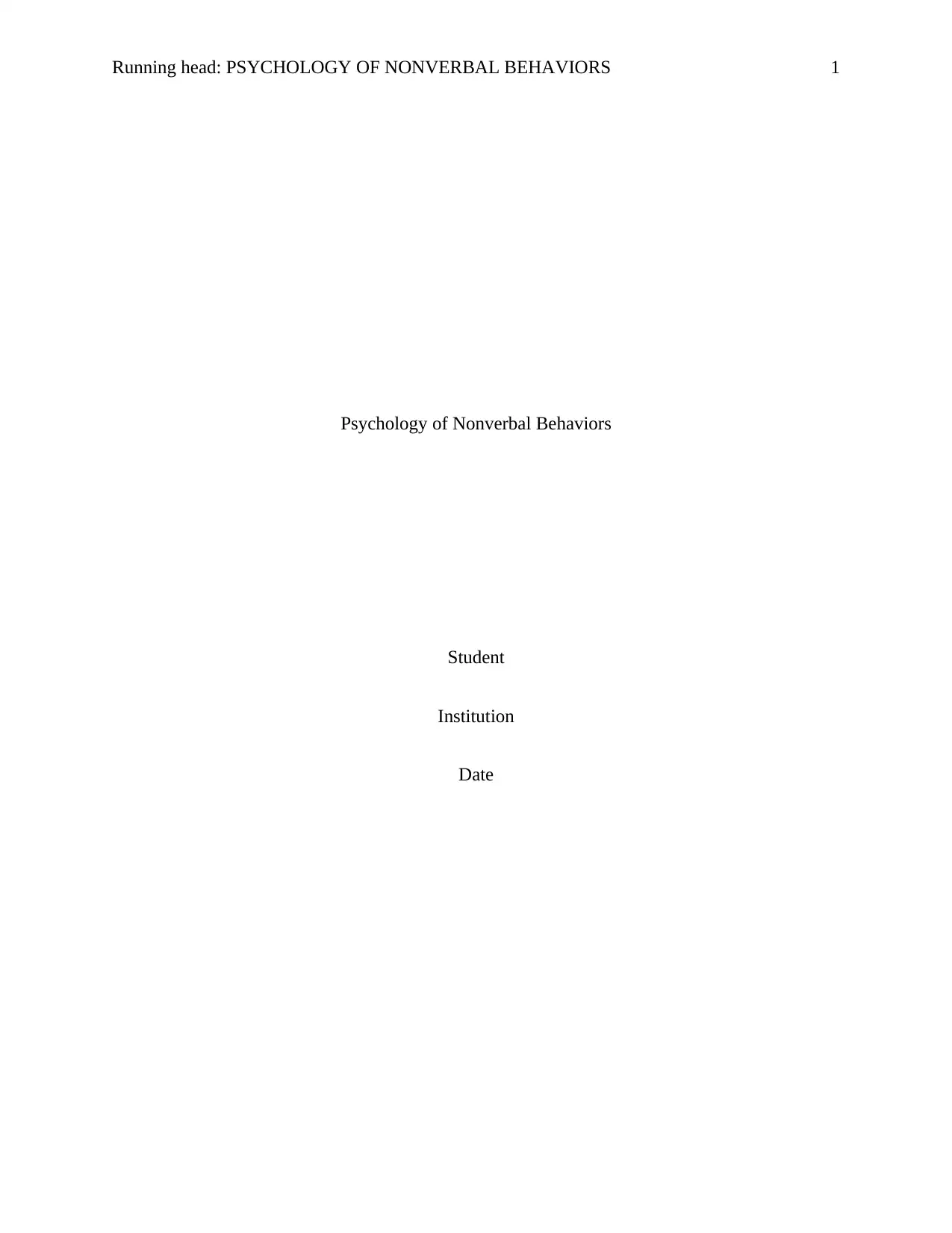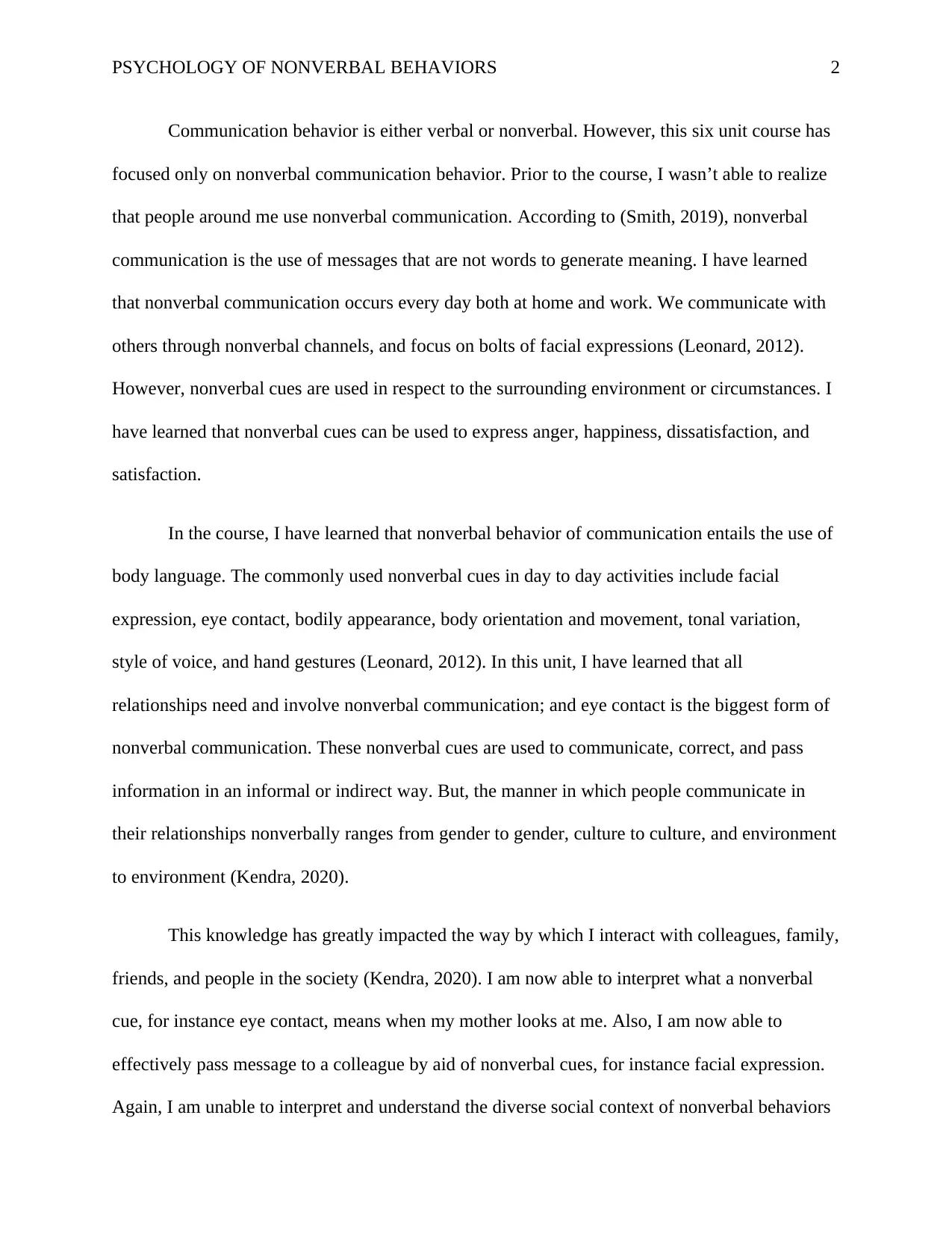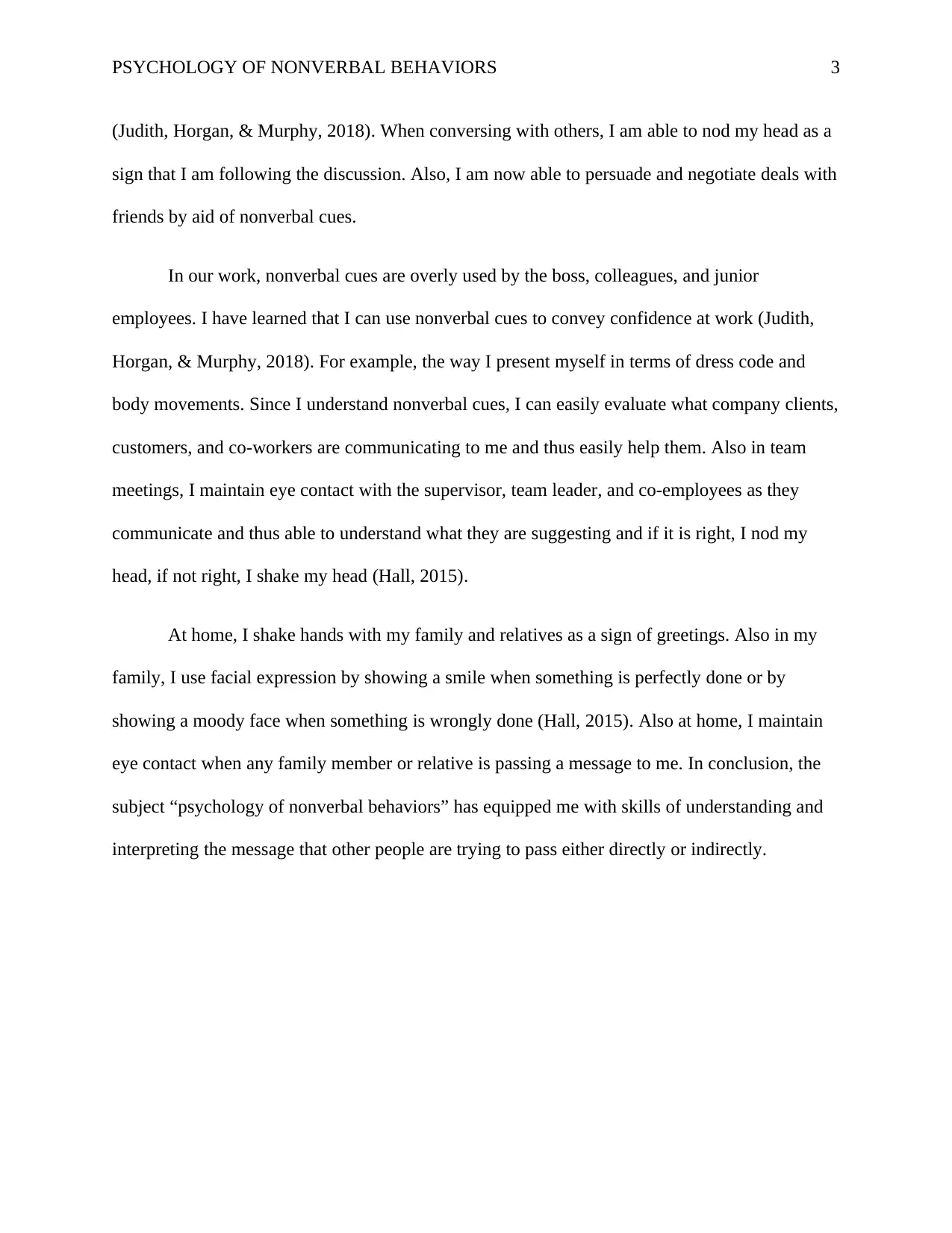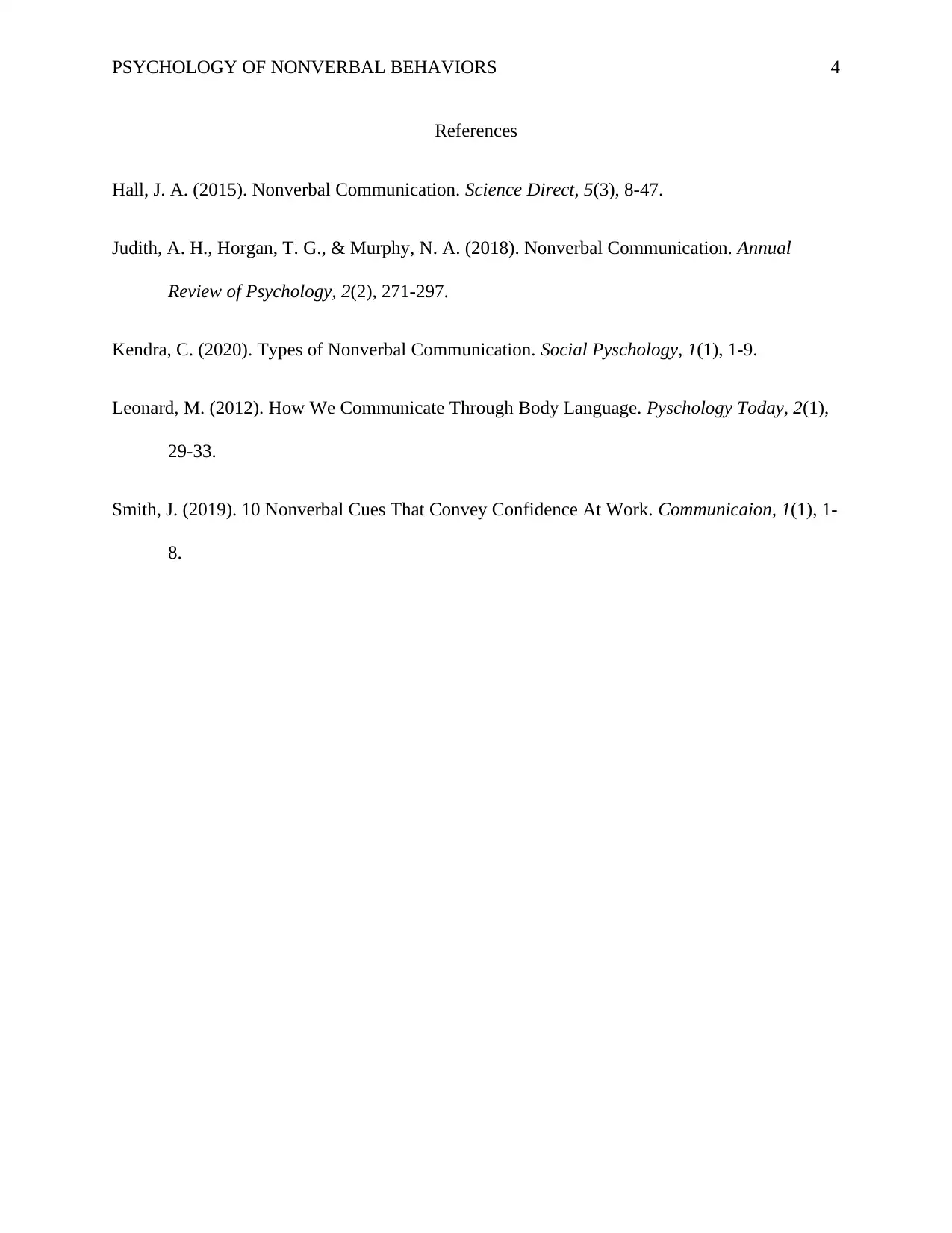PSYCHOLOGY OF NONVERBAL BEHAVIORS: Course Reflection Paper
VerifiedAdded on 2022/09/18
|4
|822
|29
Homework Assignment
AI Summary
This assignment is a reflection on a course focused on the psychology of nonverbal behaviors. The student details their learning journey, highlighting the significance of nonverbal communication in daily interactions at home, work, and in social settings. They discuss the impact of understanding nonverbal cues like facial expressions, eye contact, and body language on their ability to interpret others' messages and communicate effectively. The student emphasizes the importance of nonverbal communication in relationships, persuasion, and conveying confidence. They also discuss the practical application of this knowledge in various contexts, including interpreting cues from family, colleagues, and clients. The reflection concludes with an acknowledgment of the skills gained in understanding and interpreting both direct and indirect messages through nonverbal behaviors, demonstrating the course's impact on their communication abilities.
1 out of 4











![[object Object]](/_next/static/media/star-bottom.7253800d.svg)